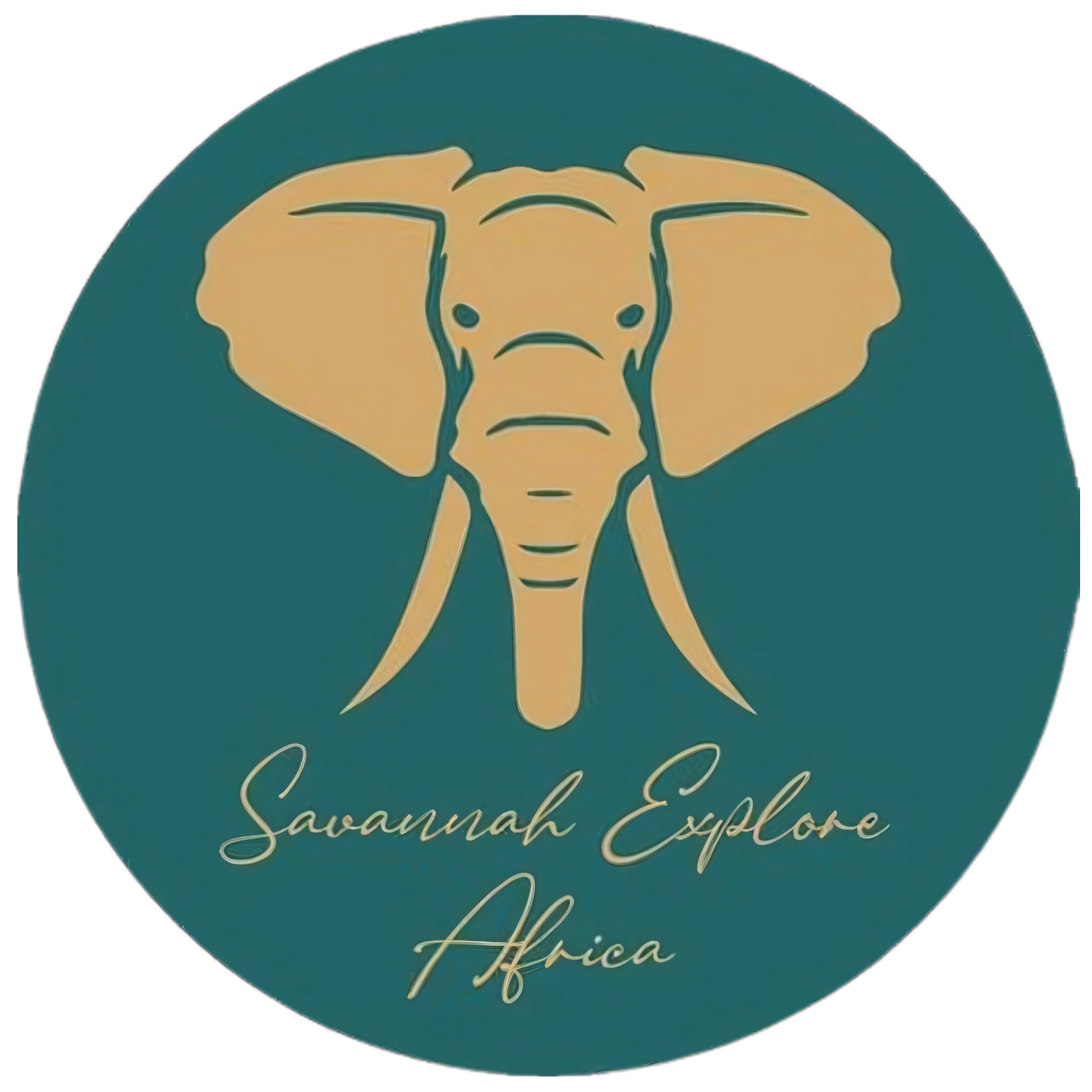Serengeti National Park
Serengeti National Park, which originated as a colonial game reserve almost a century ago, was designated a National Park in 1951 and subsequently earned UNESCO World Heritage status in 1979. It represents a pristine expanse within the Serengeti ecosystem, extending from the woodlands, lakes, and fertile plains of Ndutu in southern Serengeti to the lush northern river territories bordering Kenya’s Masai Mara National Reserve. This expansive ecosystem encompasses 25,000 square kilometers, with the national park alone safeguarding nearly 15,000 square kilometers of precious ecological treasures.
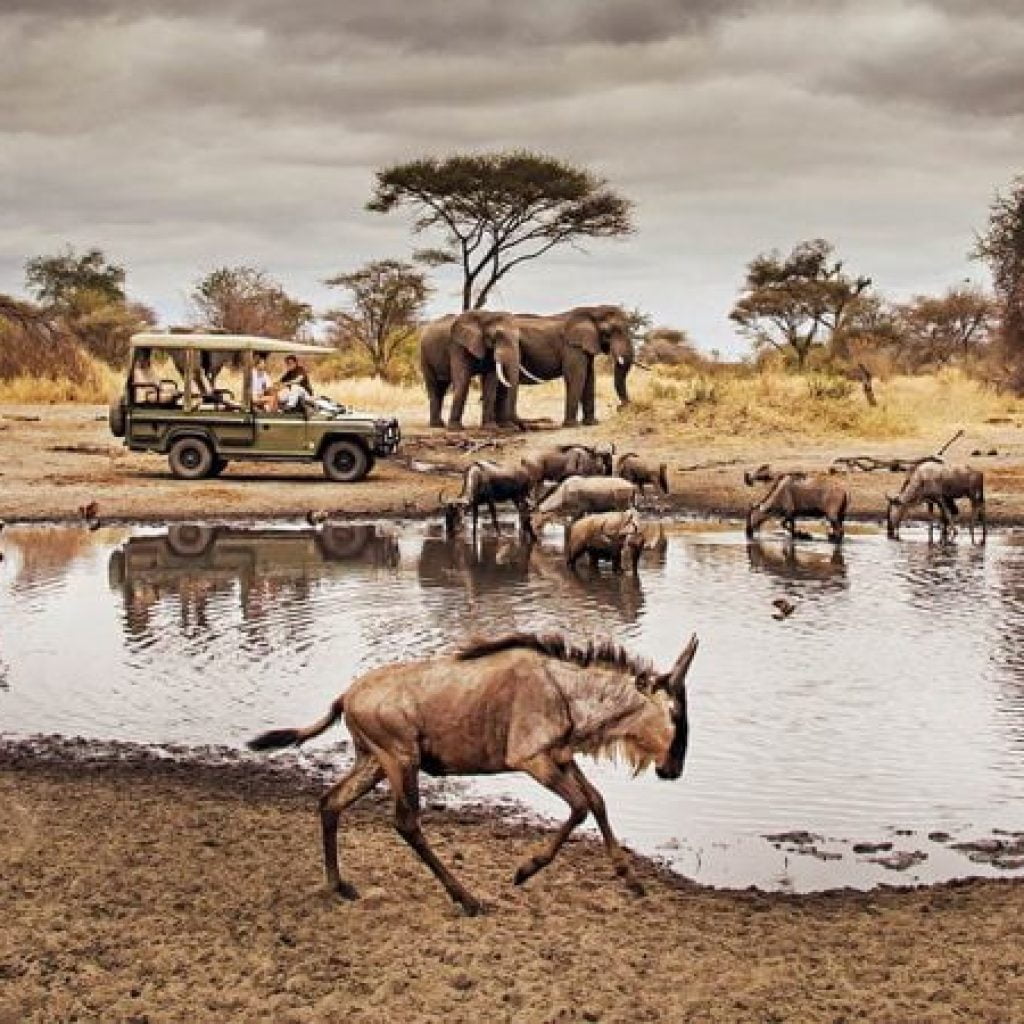
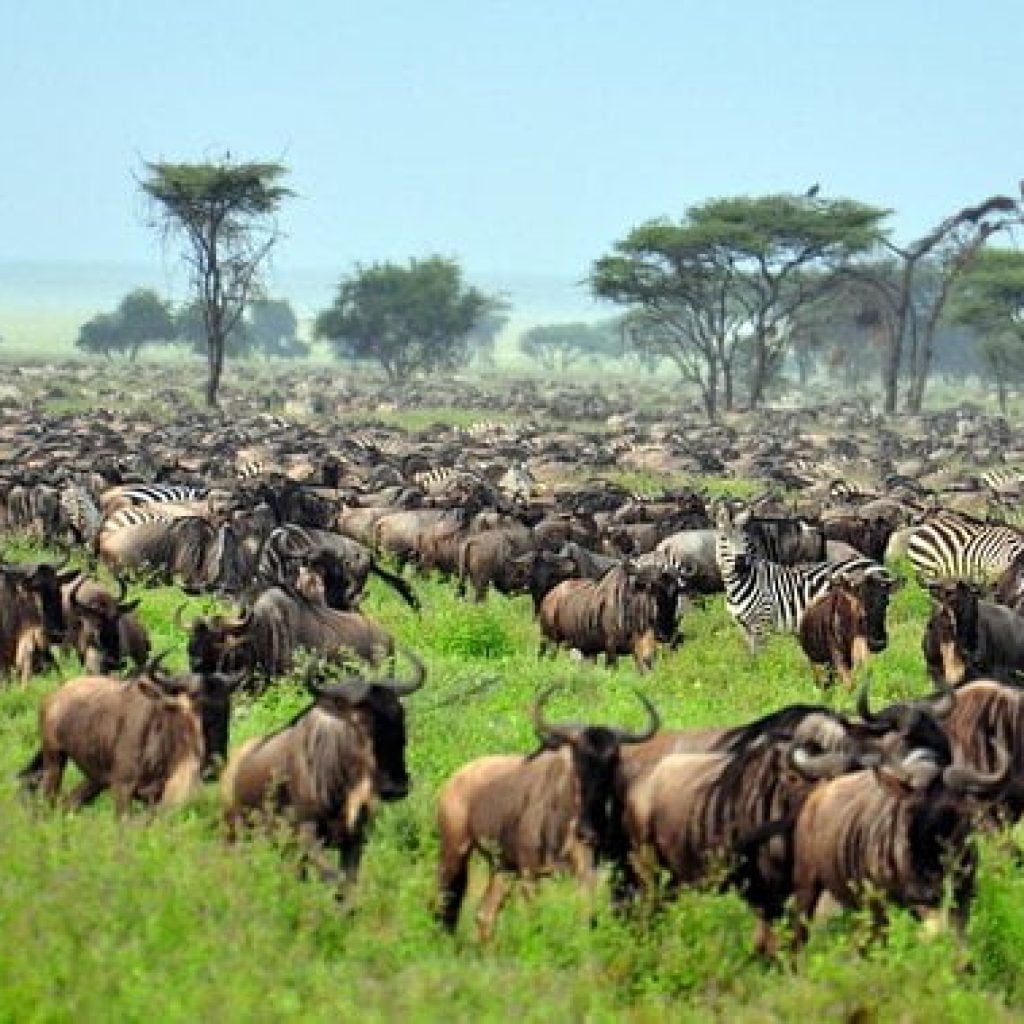
History of the Park
Originally inhabited by the Maasai, the park’s name, “Serengeti,” is derived from the Maasai word “siringet,” meaning the place where the land runs on forever. The park’s conservation journey began when the British administration noticed a decline in lion populations, leading to its designation as a protected area. This historical site is considered the oldest national park in Tanzania, setting the stage for the country’s vibrant tourism industry.
The best time to experience Serengeti’s wonders is between December and June when wildlife congregates in the park. The Great Migration, a highlight of the year, typically occurs from July to October. Consider these seasons when planning your safari adventure.
Within the Serengeti’s borders reside a diverse ensemble of wildlife, including thriving populations of herbivores, predators, and a rich tapestry of birdlife. The true protagonists are the blue wildebeest, renowned for orchestrating the ecosystem’s rhythms through their awe-inspiring Great Migration. This spectacular phenomenon spans a remarkable 3,200 kilometers from northern Tanzania to southwest Kenya and back. The migration exerts profound influences on other species, creating intricate relationships from lions and hyenas to the humble dung beetles, shaping a complex web of life and death.
Ecosystems are intricate networks of interconnected elements encompassing topography, climate, wildlife, and human influence. Serengeti experiences a climatic cycle of rainfall and drought, featuring vast grass plains in the south enriched by volcanic ash and the vital phosphates it contains. To the east, wooded highlands crisscrossed by rivers and adorned with granite outcrops, including habitats for rare species like the black rhinoceros.
For the Maasai people, the Serengeti represents a timeless refuge where life persists much as it has for millennia. The region’s history is etched in the geological annals, shaped by volcanic activity that transmuted ancient ash into fertile soil over countless years, nurturing an astounding diversity of wildlife. Amidst this rich tapestry, one species, the wildebeest, affectionately known as the “Serengeti Clown,” stands out as a linchpin, beckoning other herbivores to its lush pastures.
Activities for Tourists
The park offers a range of exciting activities. Embark on thrilling game drives, giving you the opportunity to spot an array of animals and birds. Witness the iconic wildebeest migration and explore the culture of the Maasai Mara people, who have lived in the park for centuries. Visit the Olduvai Gorge, a site of great historical significance, and explore unique landscapes like Moru Kopjes, Retina Hippo Pool, and Grumeti River.
The Grand Migration
During the brief rainy season, wildebeest herds thrive on the short-grass plains of southern Serengeti. However, as resources dwindle, a critical decision looms: migrate or face starvation. Nearly 1.5 million animals embark on an epic odyssey toward the Grumeti River and Mara River, traversing the borders of Tanzania and Kenya. This migration culminates in Kenya’s famed Masai Mara Reserve before the arduous return journey, an epic struggle for survival spanning more than 800 kilometers.

The migration commences with the wildebeasts’ breeding season in southern Serengeti, marked by intense battles among bulls for mates and territory. Remarkably, within a few weeks, approximately 90% of all cows become pregnant. During this period, the herds traverse woodlands where permanent residents like the Maasai giraffe thrive on the drought-resistant acacia trees. Within this dynamic, predators and prey coexist in a delicate balance, while the Serengeti’s adult elephants reign supreme with few natural adversaries.
Take your Serengeti experience to new heights with a hot air balloon safari. Soar above the vast plains and witness the park’s wildlife from a unique perspective. The dawn flight offers unparalleled panoramic views and incredible photo opportunities.
Explore the historical significance of Olduvai Gorge, where the remains of early humans dating back to about a million years ago were discovered. This site provides a fascinating glimpse into the history of mankind and the study of human evolution.
Visit the Retina Hippo Pool, where you can observe large pods of hippos in their natural habitat. Watch them as they swim, play, and interact with each other – it’s a captivating sight.
The Seronera River Valley is a picturesque landscape with flowing rivers, expansive grasslands, gorges, and abundant wildlife. It encapsulates the unique fauna and flora of the park and provides a serene setting for exploration.
Located southeast of the Serengeti, the Ngorongoro Crater, a vast volcanic caldera, cradles an expanse of rich, fertile land spanning 100 square miles. Within this Edenic environment flourish lush forests and abundant foraging grounds, providing sustenance for resident wildlife species, including hippos, rhinos, and numerous other animals, some of which migrate seasonally, such as lesser flamingos. Yet, like all ecosystems, the Ngorongoro Crater conceals lurking dangers. It serves as a sanctuary for endangered species like the black rhino, offering protection against relentless poachers while simultaneously presenting a feast for the formidable lion. Notably, the Serengeti region holds historical significance as the “Cradle of Mankind.” In the southeastern plains near Ngorongoro, sites like Olduvai Gorge and Laetoli house a fossil record dating back 3.7 million years. Today, this land is inhabited by the proud Maasai people, who adhere to a pastoralist lifestyle intertwined with their wildlife counterparts, the wildebeest.
Learn about the indigenous Maasai Mara people who have lived in the park for centuries. Immerse yourself in their culture, traditions, and history, and witness exciting rituals and customs that have been passed down through generations.
These rocky outcrops in the park are not only visually striking but also serve as a habitat for various predators, including the elusive black rhino. Moru Kopjes provide an exciting landscape for exploration and wildlife spotting.
The Grumeti River is known for its crocodiles, creating an intriguing spectacle as wildebeests and zebras brave the crossing during the Great Migration. It’s both thrilling and mesmerizing to witness these dramatic river crossings.
Serengeti is home to over 500 species of birds, making it a haven for birdwatchers. Keep an eye out for vultures, storks, flamingos, martial and fish eagles, and ostriches as you explore the park’s diverse ecosystems.
These activities and sightseeing opportunities allow you to fully embrace the magic of Serengeti National Park. Whether you’re captivated by the astounding wildlife, intrigued by cultural experiences, or fascinated by the history of the region, Serengeti promises a safari adventure you’ll cherish for a lifetime. Don’t forget your camera, as the park is a treasure trove of unforgettable moments and breathtaking landscapes.
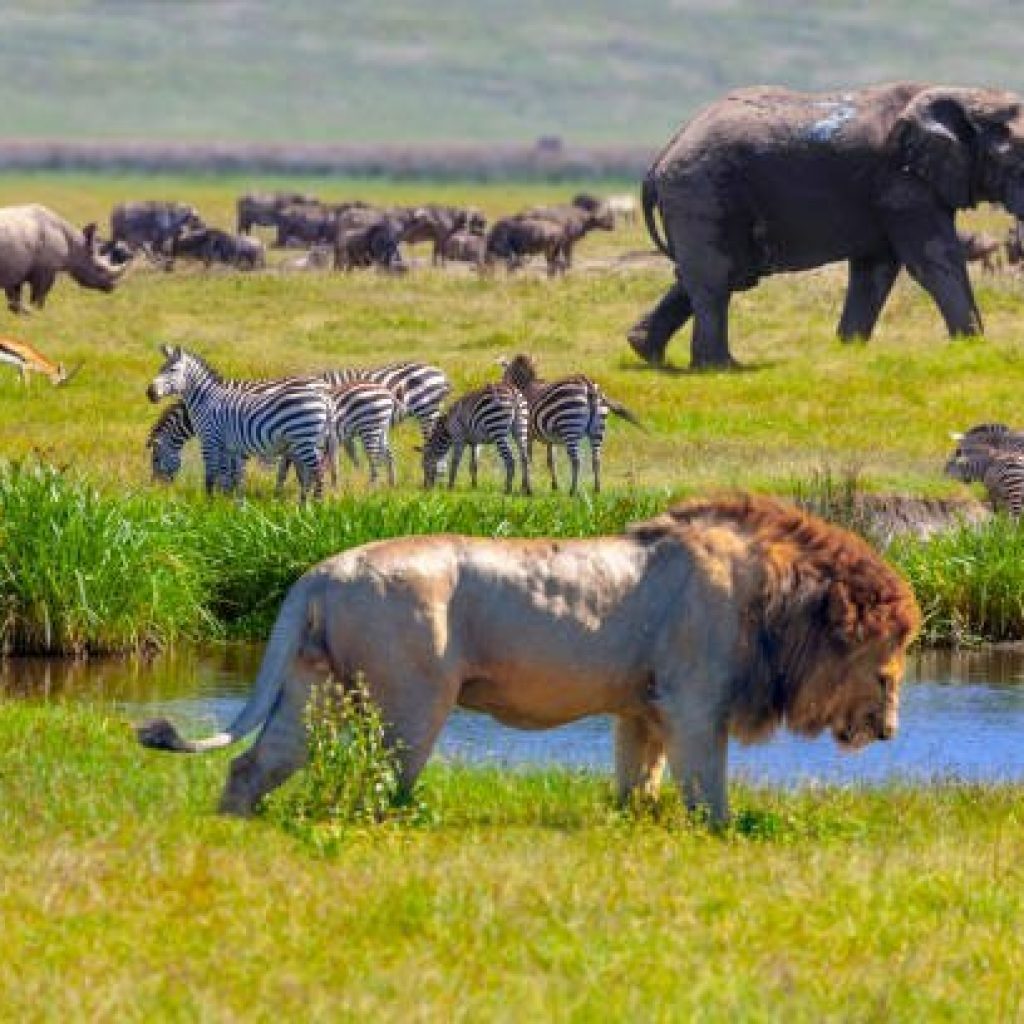
Wildlife at the Park
Serengeti is a haven for wildlife enthusiasts, home to over 3 million large mammals. You can encounter herds of buffaloes, elephants, zebras, wildebeests, giraffes, lions, cheetahs, leopards, and the elusive black rhinoceros. Birdwatchers will delight in the 500+ species of birds, including vultures, storks, flamingos, and ostriches.
Accommodation at the Park:
When embarking on a safari adventure to Serengeti National Park, one essential aspect of your journey is choosing the right accommodation. Serengeti offers a range of lodges and camps that not only provide comfort and luxury but also offer a unique opportunity to immerse yourself in the park’s breathtaking natural beauty and wildlife.
Here’s a glimpse into the types of accommodation you can find in Serengeti:
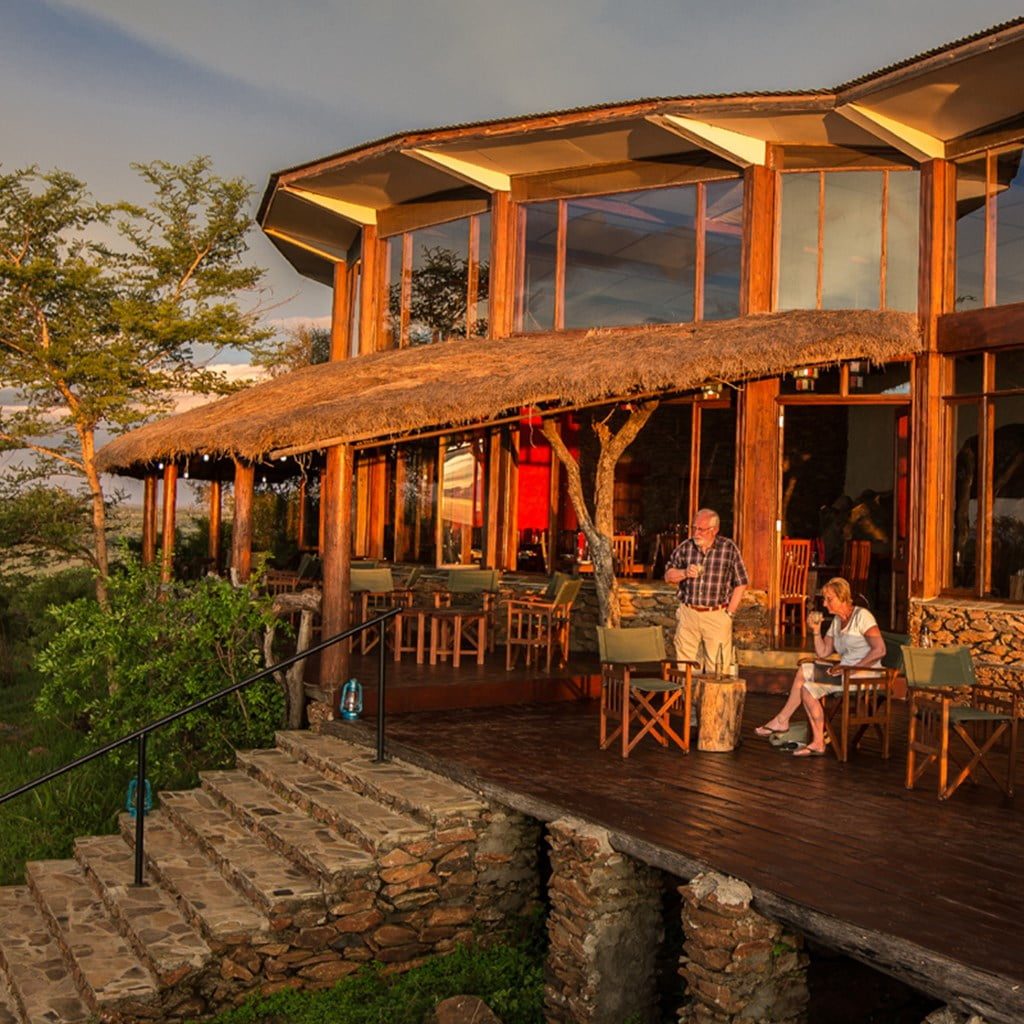
The Serengeti Sopa Lodge is a luxurious retreat nestled within the heart of the park. It boasts comfortable rooms with stunning views of the Serengeti plains. The lodge features a swimming pool, a restaurant serving delicious cuisine, and a lounge area for relaxation. From here, you can easily access the park’s prime game viewing areas.
Singita Mara River Camp is the epitome of luxury in the wild. With opulent suites, a swimming pool, and world-class dining, this lodge combines the best of both worlds. You can witness the Great Migration from the comfort of your suite’s private deck.
Lake Masek Tented Camp is situated near Lake Masek, known for its resident hippos. The camp offers comfortable and spacious tents with en-suite bathrooms. The open-air dining area allows you to enjoy meals while observing the local wildlife.
For a more intimate and exclusive experience, the Soroi Serengeti Camp is a fantastic choice. This camp offers luxurious tented accommodations with en-suite facilities. The camp’s location provides unrivaled access to wildlife, and you can enjoy sumptuous meals under the African night sky.
The Serengeti Mawe Tented Camp is a charming camp located in the central part of the park. It offers classic safari-style accommodations with modern amenities. The camp’s main area features a restaurant and lounge where you can unwind after a day of thrilling game drives.
Perched on the northeastern edge of the park, Lobo Wildlife Lodge offers incredible panoramic views of the surrounding landscapes. The lodge’s rooms are well-appointed, and the outdoor pool is the perfect place to relax and soak in the scenery.
Each of these accommodations offers a unique experience, but they all share a common thread: the opportunity to connect with the natural world while enjoying the comforts of modern living. Whether you prefer a secluded and intimate camp or a luxurious lodge with all the amenities, Serengeti National Park has options to suit every traveler’s taste and budget.
Whichever you choose, staying in Serengeti is not just about accommodation; it’s about being part of the wild, experiencing the sounds of the savannah, and witnessing the stunning wildlife that surrounds you. Make sure to book your stay well in advance, as these accommodations are in high demand, especially during the peak safari seasons.
Safety Procedures and Protocols
While Serengeti National Park offers a thrilling adventure into the wild, it’s essential to prioritize safety to ensure a memorable and secure safari experience. Here are important safety procedures and protocols to follow while exploring this remarkable park:
Respect the park’s rules and guidelines, and stay within designated viewing areas when observing wildlife. These areas are carefully chosen to minimize disturbances to animals and maintain your safety.
Your safari guides are experienced professionals with a deep understanding of the park’s wildlife and terrain. Pay close attention to their instructions and heed their advice. They are there to ensure your safety and enhance your safari experience.
It’s crucial not to feed any animals in the park. Feeding wildlife can disrupt their natural behaviors, make them dependent on human food, and even pose a risk to your safety.
If you need to walk within the park, always have a guide with you. Walking in the wild can be risky due to potential wildlife encounters. Stick to designated walking areas and trails.
Keep the park clean by not littering. Respect the park’s flora and fauna, and avoid picking plants or disturbing the environment. This helps preserve the park for future generations.
Familiarize yourself with the typical behavior of the animals you’re likely to encounter. Understanding their habits can help you stay safe and make informed decisions while observing them.
Maintain a safe distance from wild animals. It’s essential to remember that the animals in Serengeti are not domesticated and can be unpredictable. Always adhere to the advice of your guides.
Serengeti’s climate can be hot and sunny. Stay hydrated by drinking plenty of water and use sunscreen to protect your skin from the African sun. Wearing a wide-brimmed hat and lightweight, long-sleeved clothing is also advisable.
Keep your personal belongings secure in your accommodations or vehicles. This includes food, as wild animals may be attracted to the scent.
While on game drives, remain in your vehicle at all times unless instructed otherwise by your guide. The vehicles are designed to ensure your safety and provide the best wildlife viewing experience.
Ensure you have a means of communication, such as a mobile phone or radio, in case of emergencies. If you’re part of a guided tour, your guide will likely have this covered.
Be prepared with necessary medications and first-aid supplies. It’s also advisable to have a basic understanding of any potential health risks specific to the region.
By adhering to these safety procedures and protocols, you can fully enjoy your Serengeti safari while ensuring the well-being of both yourself and the park’s remarkable wildlife. Serengeti offers a unique opportunity to connect with nature, and respecting these guidelines is essential to preserving this natural wonder for future generations.
When it comes to reaching Serengeti, your journey becomes even more convenient with the assistance of Savannah Explore Africa, a renowned tours company. You can access Serengeti by catching a flight to Kilimanjaro Airport, which is conveniently situated just 29 miles from Arusha. From there, with the support of Savannah Explore Africa, you have the option to arrange a small chartered plane to transport you to Serengeti, ensuring a seamless and picturesque transition. Alternatively, if you prefer the scenic route, Savannah Explore Africa can organize an 8-hour road trip for you, allowing you to soak in the breathtaking landscapes of Tanzania along the way.
A visit to Serengeti National Park is an extraordinary African safari experience, and when you partner with Savannah Explore Africa, you can make the most of it. Whether you’re a nature enthusiast, a history aficionado, or an adventure seeker, this destination offers something truly exceptional. Savannah Explore Africa can help you plan your entire trip, from transportation to accommodation, making your visit to Serengeti as wholesome and memorable as possible. So, get ready to tick this remarkable safari adventure off your bucket list, following all necessary safety procedures and creating lasting memories in the heart of Tanzania’s wilderness.
Feel free to contact the safari experts at SAVANNAH EXPLORE AFRICA for the creation of a perfect safari adventure in Serengeti National Park.. You can use the provided links to get in touch with us and explore our diverse travel packages to tailor your experience. Visit our website at https://www.savannahexploreltd.com/ or give us a call at +256785049225. Alternatively, you can visit our physical offices at Plot 35, Kampala Road, Posta Uganda building, Level 5, No. 502A.
Trending Safaris
Tailor-made itineraries
for every traveller
We’re excited to take you on a journey to experience sights and sounds found nowhere else on Earth. Unique scenery, wildlife and cultures are waiting to be revealed, and we at Savannah Explore Africa can’t wait to share them with you. Our custom designed journeys are intended to inspire but can be tailor made to suit your every need. It’s time tolet your safari dreams run wild.
Let Us Plan Your Dream African Trip


Enquire now and a Travel Expert will get
back to you.
Subscribe to Our Newsletter
Join Our Monthly Newsletter, stay in touch and travel when ready
